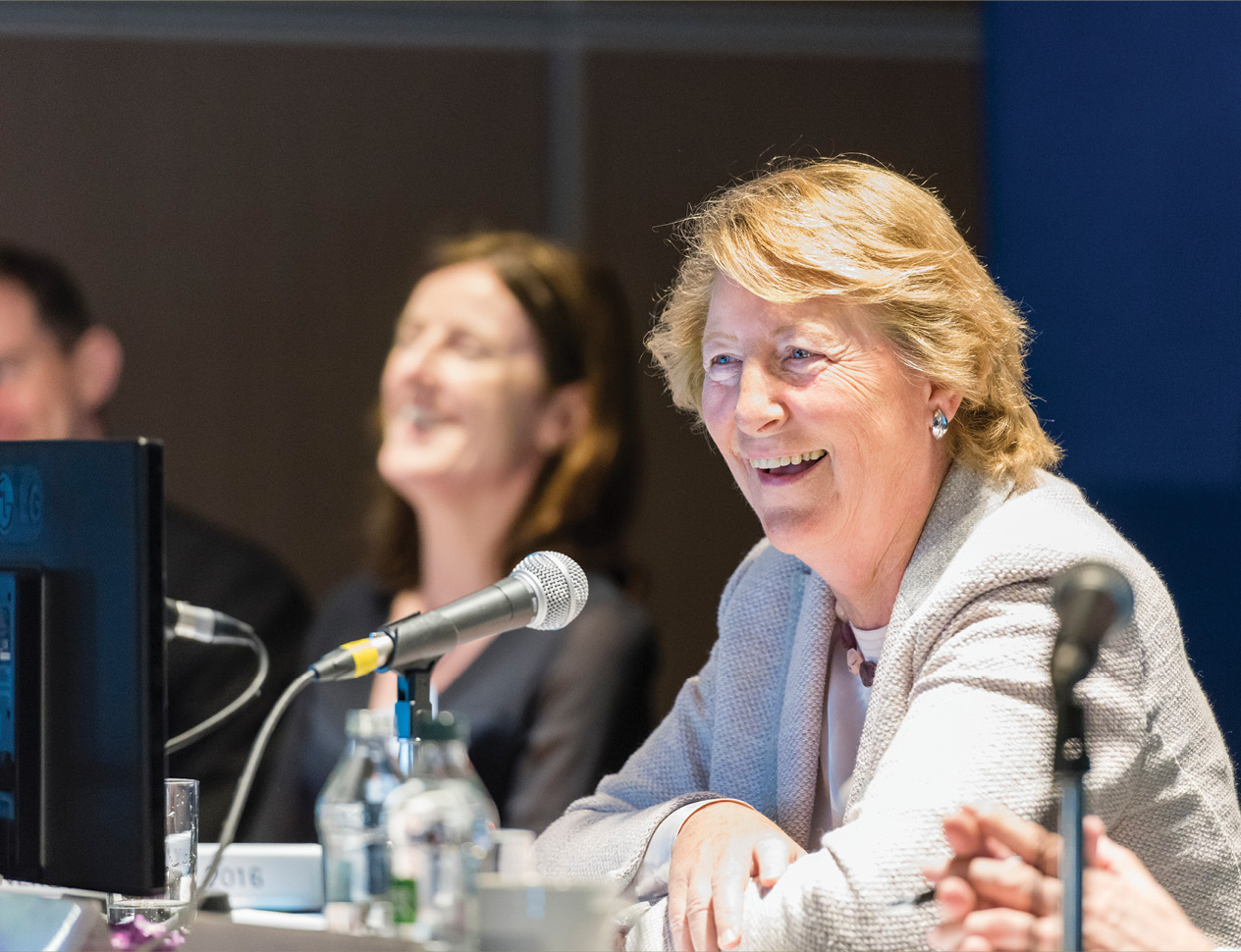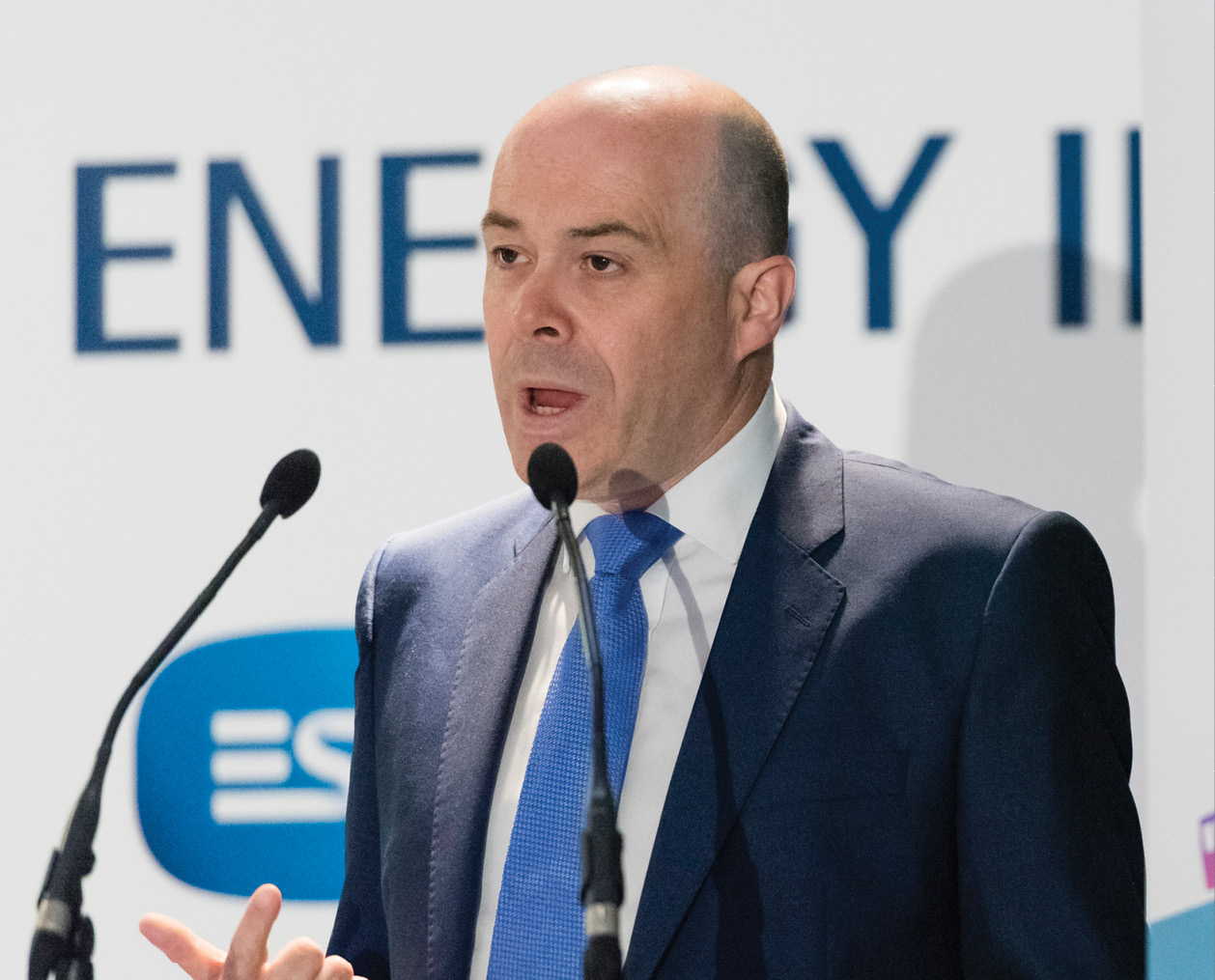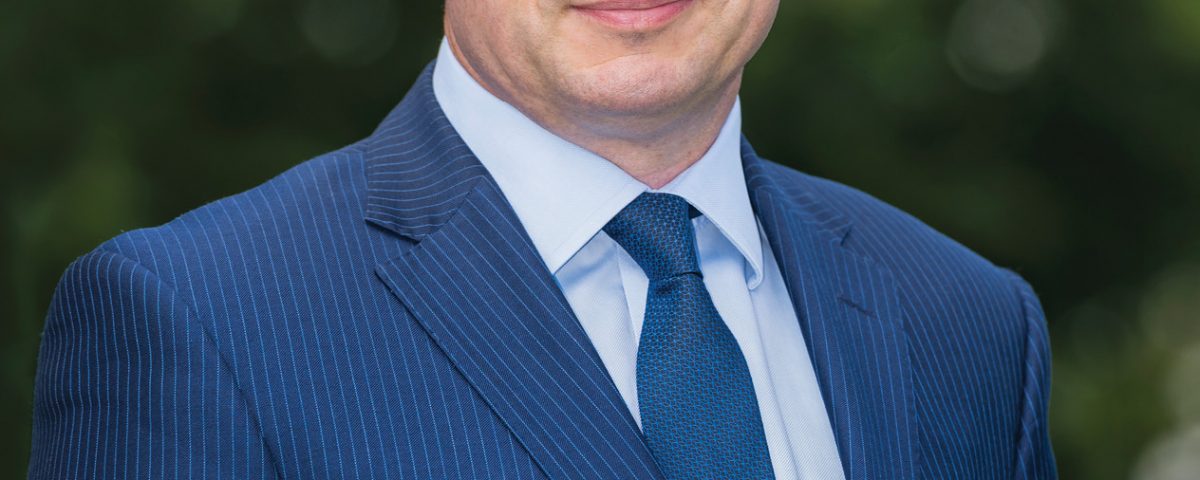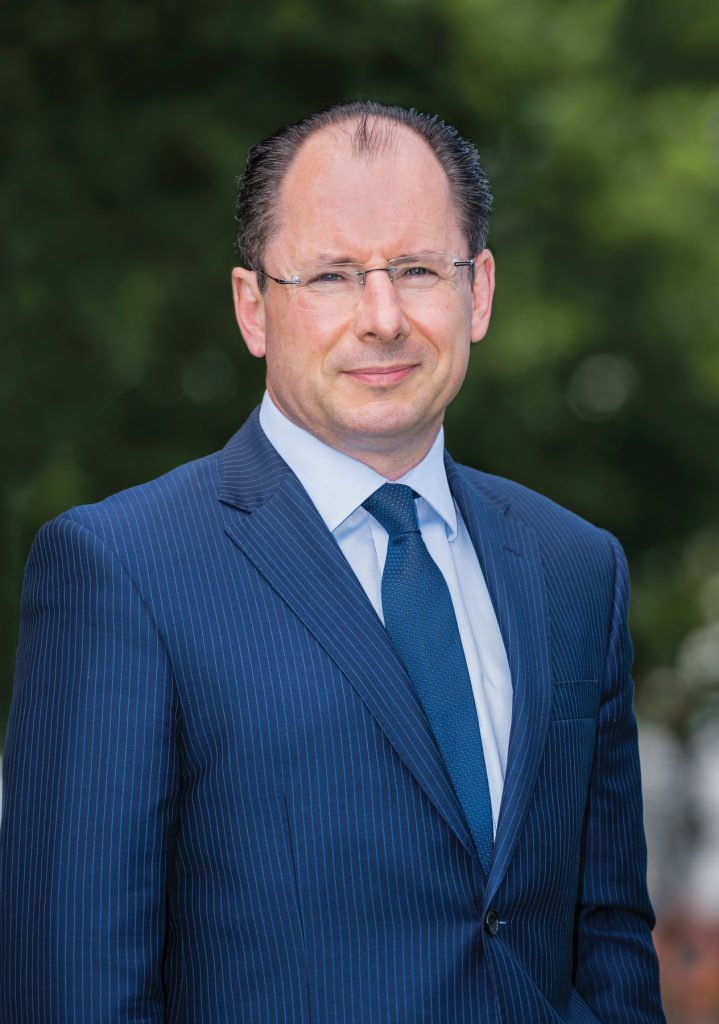
De-carbonising energy: an EU Commission perspective
9th November 2016
Ireland is well on track to become a low carbon country
9th November 2016Closing the loop


Gaelectric’s Group Chief Executive Officer, Barry Gavin, talks to Owen McQuade about the growth of the renewable energy company and its transition from onshore wind developer to a green virtual power provider.
Gaelectric was founded in 2004 with its primary focus on onshore wind energy in Ireland, north and south. In 2006, the company started looking at energy storage technologies and in particular compressed air energy storage (CAES) and are now developing a CAES project on the east coast of Northern Ireland in County Antrim. In the late 2000s, the company expanded outside the island of Ireland when it opened an office in North America, initially looking at wind energy development centred on the State of Montana, but this has since expanded to other opportunities in the renewable energy sector.
Looking back over the development of the company, Gaelectric Group Chief Executive Officer, Barry Gavin says that the company has evolved as the market for renewable energy has grown and changed. “When we started the business, the thinking at that time was that the highest penetration of renewables that the electricity system could handle was 5 per cent of the total, which was a fairly low threshold. That constraint was eventually breached from a technical viewpoint and then we saw the introduction of a target of 40 per cent for renewable electricity by 2020. That gave the industry great certainty and a sense of direction that is important for a long-term asset like a wind farm, which can take between five and seven years from inception to operation.”
Regulatory uncertainty
The regulatory certainty over the past decade has underpinned the growth of renewable energy: “There are always risks with development, such as planning or construction risk. But as a developer you are comfortable in managing those risks. However, one risk we don’t like is regulatory uncertainty.”
Gavin observes that each jurisdiction on the island of Ireland has its own challenges with the different planning regimes north and south: “The process in the north is a lot longer than it is in the south. The regime in the south is very prescriptive and the planning application has to be turned around in a certain amount of time. In the north, until quite recently, you could only get a grid connection after you had planning permission, whereas in the south you can get a grid connection at any stage,” he says.
“we will not achieve the necessary transition to a low-carbon energy future unless we travel that path together with the people and communities throughout the country.”
Until recently there was regulatory certainty in Ireland, north and south. “In the north of Ireland that regulatory certainty is now gone with the removal of the ROC [Renewable Obligation Certificates] regime. We are now in a period of regulatory uncertainty and that will impact on how projects will develop in the north.” In the south, the REFIT (Renewable Energy Feed-in Tariff) scheme expires next year, but the Irish Government has said it will continue to support the sector, unlike the UK Government which has decided to effectively withdraw support for renewable energy.
“There would be a lot of sense in introducing an all-island support mechanism as we already have a single electricity market on the island. Up until now, the REFIT scheme in the south has worked well and at a European level this has been the most cost effective way to support renewables. In the UK the ROC scheme also worked well but that support has been withdrawn for a new CfD [contracts for differences] scheme which will not support renewables in Northern Ireland,” highlights Gavin.
Growth
At an early stage, Gaelectric took the decision to develop its own in-house expertise in key commercial and technical areas rather than subcontract activities such as land acquisition, planning, technical work, procurement and finance. The company now has its own teams for each of these key functions and this has allowed it to take projects right through construction into operation and maintenance. “This approach has allowed us to tackle projects that other developers may not be able to because of particular project challenges,” adds Gavin.
Gaelectric’s business has grown by both greenfield development and by acquisition. With its depth of expertise, the company has been able to acquire interests in a number of projects that have had their own challenges for various reasons. “We have the bandwidth and the capability to address challenges either in planning, technical or grid issues,” he says.
A key part of future growth will involve energy storage. Gaelectic’s CAES storage project is well advanced in Northern Ireland. “The project uses proven technology. It is currently in planning which we hope will be completed by the end of this year. It is located on the east coast of County Antrim, near Larne, where there are geological deposits of salt which are used to create the caverns used by CAES to store energy as compressed air. This is the only location on the island of Ireland which has these salt deposits. The location is also beside other grid and power infrastructure which will allow the project connect into the transmission grid in Northern Ireland.”
The technology for the project is being provided through a strategic alliance with key partners, including Siemens Dresser Rand. Gavin says that the project is “progressing well”. It has achieved European Project of Common Interest (PCI) status within the European Energy Programme. “We have received great support from the European Commission and the project is seen as something that has application throughout Europe.” Gaelectric has also partnered with Dutch energy utility Gasunie and AkzoNobel to develop similar projects in the Netherlands, Denmark, Germany and the UK. “We have developed an expert in-house team with a robust project methodology. A lot of the work we have done for the Larne project can also be replicated at other sites in Europe.”
“Partnership is something we do well, whether it is wind, storage or the other aspects of our business”
Gaelectric has also spent a number of years understanding how bulk energy storage works in the energy market and the benefits it will bring to that market. The company is uniquely positioned as there are very few developers globally that have this expertise. “With our partnership with Gasunie and AkzoNobel, and our technology partner Siemens Dresser Rand, we have a coalition of the willing to develop more energy storage projects across Europe,” he adds.
Partnership
Gaelectric has always taken the approach of developing partnerships with industry technology leaders. On the wind energy side of the business, in 2011, it entered into a framework agreement with German wind turbine manufacturer Enercon and it has used its technology exclusively in its first portfolio of projects. Today there are nine projects operating with 175 MW, with another seven projects in construction, another two with planning permission and four in planning. There are 22 projects in the Gaelectric development pipeline and the target is to have 400 MW operational by the end of 2017, all using Enercon technology.
“Partnership is something we do well, whether it is wind, storage or the other aspects of our business,” says Gavin. Last year the company entered into a framework agreement with US company, Tesla, for the deployment of its Powerpack and Powerwall batteries. CAES is a large scale storage project that will be able to generate 330MW of power for periods of between 6 and 8 hours – enough to meet the energy needs of over 200,000 homes. The Tesla batteries which Gaelectric will deploy in Ireland are at the domestic and the local grid scale of 5-10 MW to deal with local grid infrastructure issues.
Future
Gavin sees energy storage as a key element in the new energy market that is evolving rapidly in the early twenty-first century. “We are moving from the old energy model that is supply-led, centralised, with fossil fuel based generation to one that is demand-led, localised and decarbonised.”
There is now much more local power generation at a smaller scale using a number of technologies including solar, biomass or wind. People are starting to generate power both for their own consumption and to export to the grid. Gavin calls this the rise of the “pro-sumer” where people are both consuming and producing energy. “Batteries will have a key role to play in that scenario, to store and use energy yourself at a later time, or to sell it to the grid when prices are higher.”
In this new energy landscape, Gaelectric sees itself as being a green virtually integrated power producer (VIPP) with a focus on the renewable technologies of wind, solar and bioenergy. In 2015, the company acquired Imperative Energy which is a developer of bioenergy plants in Ireland and UK, with over 60 plants in operation. “The Imperative people are now part of the Gaelectric team and are developing our bioenergy and solar strategies.”
Two years ago, Gaelectric set up an energy trading team (trading as Gaelectric Trading and Marketing Services) in response to what it saw in the market: a contraction in the number of parties that were providing off-take agreements, particularly for wind farms where it is typical to enter into a 15-year contract with a utility such as ESB, NIE, BGE or SSE. “What we were seeing, initially in the north, and then in the south, was that the number of parties providing us with these contracts was reducing and the terms where becoming less and less attractive. So we developed our own market knowledge and expertise, and have started writing our own contracts for wind, initially for ourselves and now for third parties,” he says. The next stage in developing its energy trading business was to start trading power across the interconnector with Great Britain, which will be extended into trading into mainland Europe.
Gaelectric trades energy and provides management services to solar, biomass and wind plants, “anyone who needs a contract to sell their energy.” Gavin sees this part of the business expanding further as the Single Electricity Market is developed into an integrated market with GB and France, known as I-SEM. Under this new trading model, renewable sources of electricity will have to be “balanced responsible”. Until now, wind was automatically dispatched onto the system and the system operator manages any volatility. In the future that will be the responsibility of the generators themselves. Gealectric will be able to provide those balancing services to third parties as well as for their own portfolio of plants, by having storage capacity available.
“Looking to the future, as we move into the next stage of market development, we will continue to be a developer of green renewable assets such as wind, bioenergy, solar and have the expertise to manage these assets for either ourselves or third parties through our involvement in trading and providing energy services. The final link will be to supply energy to end users – we will have effectively closed the loop, from generation, operation and maintenance, trading and to supply to the final end user,” concludes Gavin.
Profile: Barry Gavin
Barry Gavin is Group Chief Executive Officer of Gaelectric. He was previously Chief Financial Officer, having been one of the founding shareholders in 2004. Dublin born and an accountant by profession, he has held a number of senior roles in the number of industries including automotive, FMCG, retail and manufacturing. Barry entered the energy sector when he and Éamonn McGrath were working in the pensions industry and started looking at wind energy investments as part of pension portfolios. They joined with Éamonn’s brother, Brendan, to establish Gaelectric in 2004 and it has grown to become one of Ireland’s largest independent wind energy developers. Barry is passionate about the company’s mission, “to empower next generation energy users with power from nature, through the development and deployment of sustainable energy solutions and services.” He added: “We are one of the few industries where our work makes a real difference.”
Barry’s interests outside of Gaelectric revolve around family and sport, including his GAA club in Clondalkin, where is a former player and now involved in coaching.
